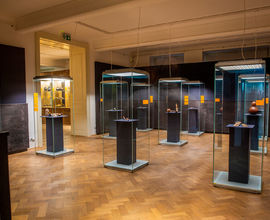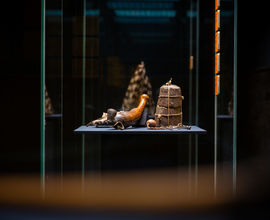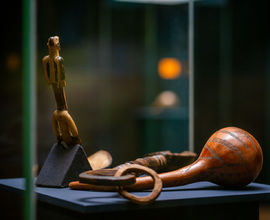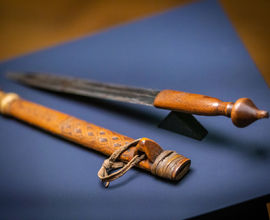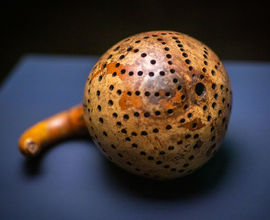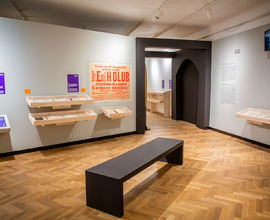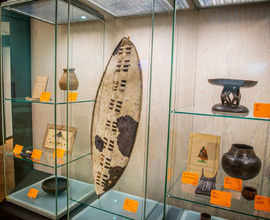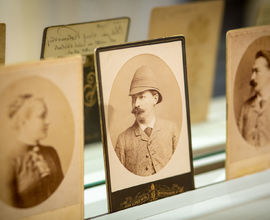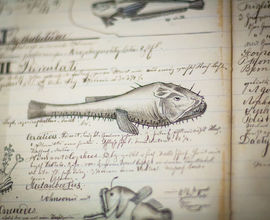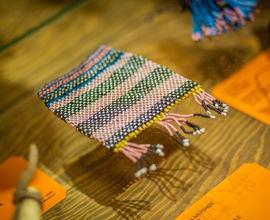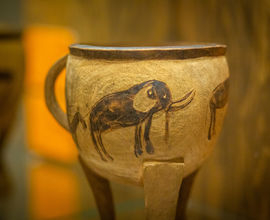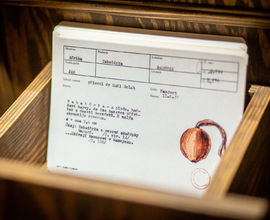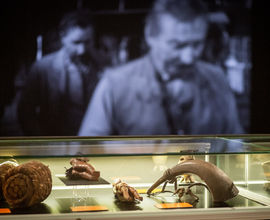During his eleven years of exploration in South Africa, traveller Dr. Emil Holub collected tens of thousands of objects, made observations covering the fields of natural history and ethnography, hunted game, and studied the ethnic groups he encountered on his travels. His portrait with a typical tropical helmet is basically iconic. To this day, his immense popularity has been exploited by various artistic and advertising projects, shaping and distorting the traveller into an image that has become almost cult-like.
The aim of the Emil Holub exhibition is not to convey a comprehensive view of Holub's personality, but to open up questions directed towards the present. How do we perceive Emil Holub and the activities associated with him today? How do various myths and legends influence this perception? What is the value of Holub's collections, how did he work with them and how does contemporary exhibition and collection-building work with them? Where can we see objects from these collections? How do we perceive Holub through the lens of colonial studies?
The exhibition is divided into four parts. The first one is devoted to two journeys to Africa that Holub made in the 1870s and 1880s. Through several examples, it shows how Holub created a depiction of the course of these journeys, what their original goals were, how they were fulfilled, and how they were reacted to by some of the later products of mass culture. It also shows the most important discoveries made by Holub during his expeditions in South Africa and presents his natural history collection.
The second part of the exhibition focuses on Holub's activities and opinions in the context of his time and the thinking of said time.
The third part of the exhibition is dedicated to the ethnographic collection. Through various types of object installation, it highlights both Holub's special approach to creating the collection and its transport from Africa and later storage in the museum's depository. It also opens up the question of how to work with the collection today and what relevance it has nowadays.
The last part is devoted to Holub's South African Exhibition in Prague, which took place at the Prague Exhibition Centre in 1892 and which became the culmination of Holub's lifelong exhibition activities.
The exhibition offers a number of ethnographic objects, natural history exhibits, photographs, drawings, books and posters, as well as diaries and notebooks, which you will be able to flip through using a digital application. We can be reminded of Holub's status of a legendary traveller by excerpts from Czech feature films, an advertising spot and a video clip by a well-known punk band.
The Emil Holub exhibition was created in cooperation with the Institute of Art History of the Czech Academy of Sciences.


